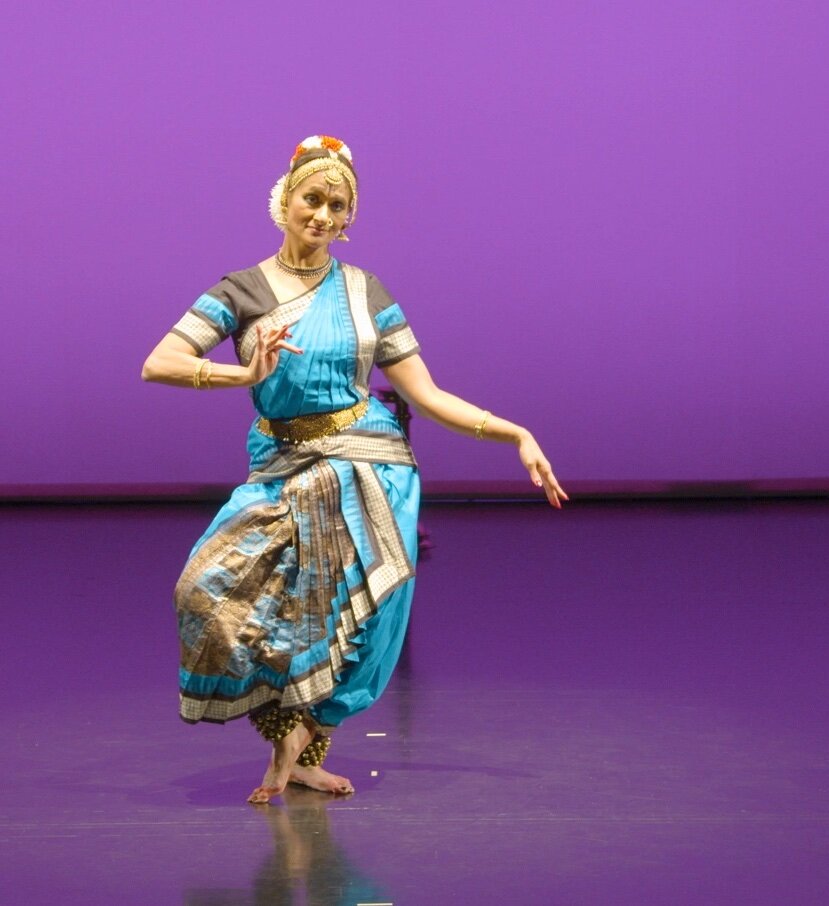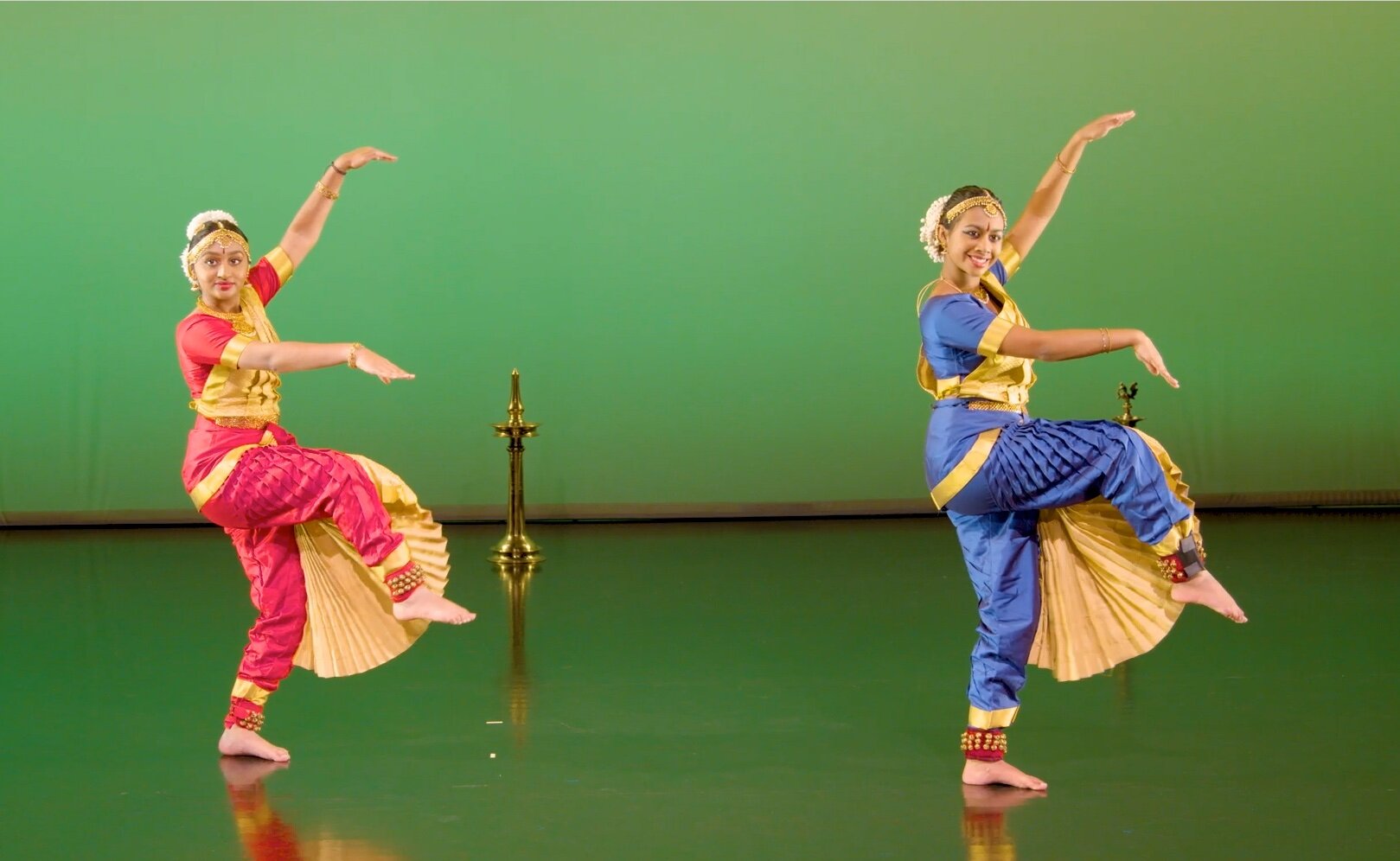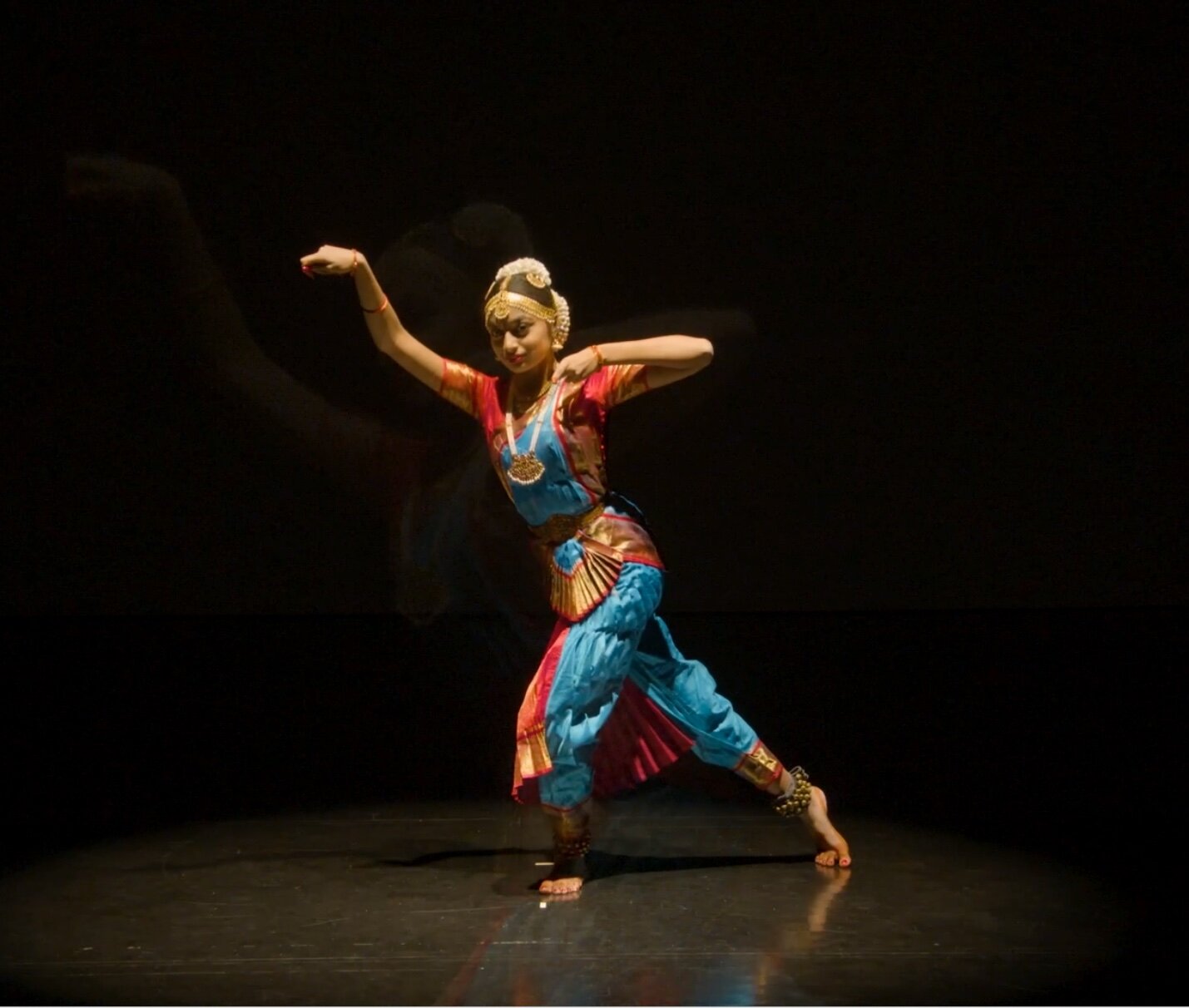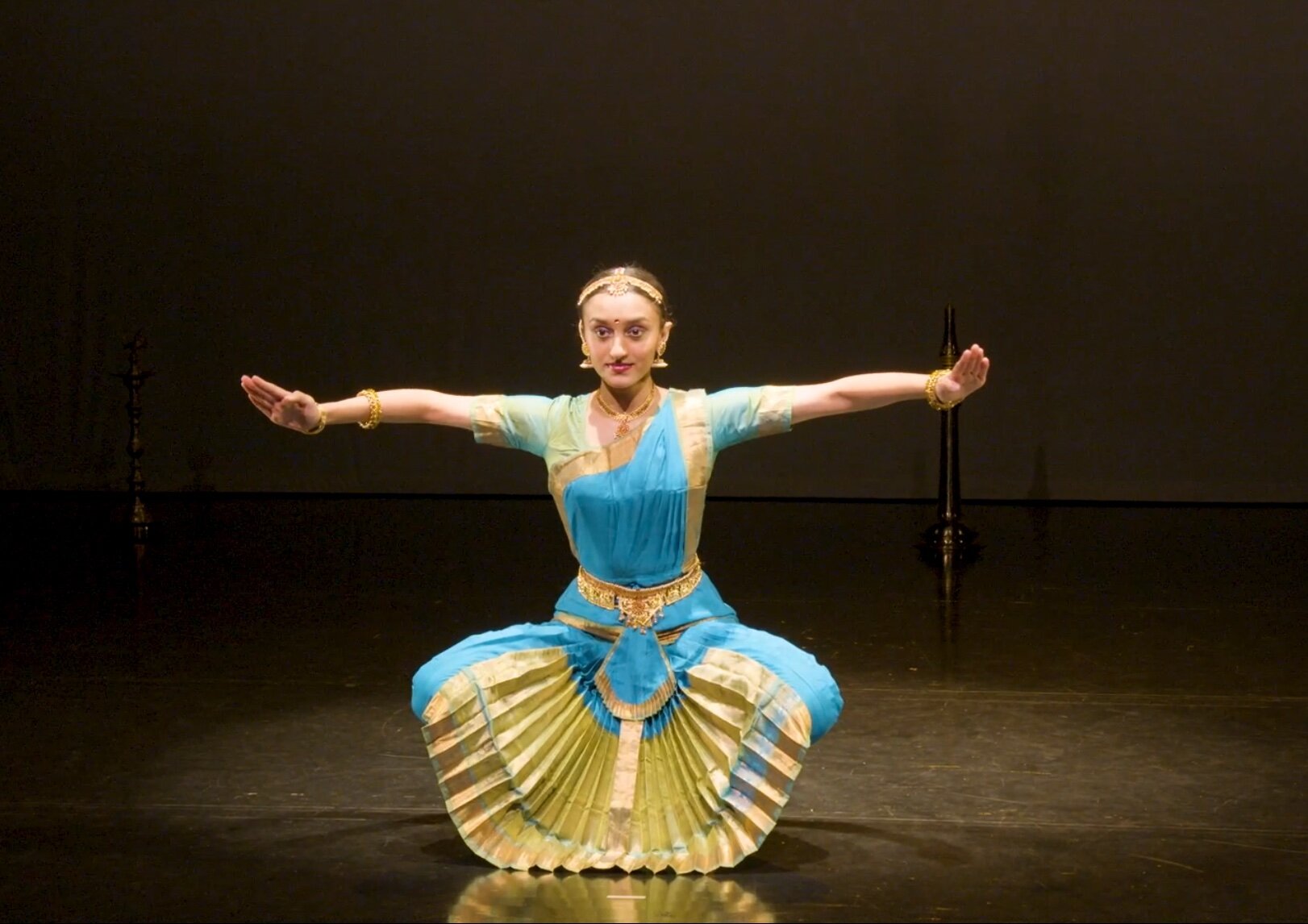As a previous student under the direction of Srilatha Singh, the director of Chitrakaavya Dance, it was an honor to be able to view their new production, Aabhaaram. Precise, direct pathways of arms, combined with their vibrantly clear hasta mudras, or hand positions, are signature expressions of their Kalakshetra style of Bharatanatyam technique. This striking style was executed with ferocity throughout the performance. Beautifully intricate dancing that pulled me into greater appreciation for this ancient, living form of dance.
The concert, as Singh said in our interview, was in the traditional Margam structure, meaning “The Path.” In the first work, Pushpanjali, the dancer began in supplication to the gods, gently laying her hands to the ground, comforting the Earth that was about to be stepped upon. This blessing is the beginning of the Margam. Each directionional pathway was activated throughout the work by painting the space with flowing hands, emotive eyes, and the tinkling of bells at her ankles. A powerful beginning.
Alarippu was more about subtlety than pure strength. I was stunned by the dancer’s musicality to be able to follow with precision where the complex music flowed. Sharp head movements and shoulder articulations were at the forefront of this work, which felt more ritualistic in nature. As the work progressed, the grace and unfolding of the dancer expanded in a crescendo of facial expression, widening movement, and stark lines, imitating the towers inside the temple and blossoming petals.
Jathiswaram was an innovative work. This duet had satisfying symmetry between the two dancers that often broke into variation, only to meet again like planets in orbit. The polyrhythm between eyes, feet, and arms provided a dizzying display of mastery. What was most surprising was the variation of their legs, which not only stomped, but were sweeping, swinging, lunging, folding, retracting. They occupied all levels and areas of space, meeting the ground and reaching high to keep viewers’ eyes engaged in anticipation. When I mentioned this striking new style of bharatanatyam, Singh explained that this circularity of legs and hips were the result recent research by Dr. Padma Subrahmanyam, an expert in bharatanatyam dance. She reconstructed the Karanas style of movement from ancient texts from southern India. This new style displayed by the dancers was indeed an exciting new movement vocabulary, and it was a treasure to witness.
The next two pieces, ChandraChuda and Keerthanam – Tunga Tarange, were two longer storytelling dances. Singh, in her explanation before the pieces, told the stories about the gods and goddesses that inspired them. This context provided a helpful framework to view the pieces, as I watched the dancers embody these deities. The struggle between the god of Death, the devotee, and Shiva were apparent in their facial expressions and actions that pantomimed the divine drama in the prior piece. The fluidity of the dancer’s hands in the latter behind the beautiful blue backdrop evoking the river goddess, Ganga, and the grace and power of rushing waters in the latter.
Tillana was a bright finale to the evening performance with its sharp and bright movements, accented by playful leaps and brisk, clean movement, and pure joy. A heart-warming reflection on auspiciousness and closure to the evening, which is invoked upon the viewer in Mangalam.
I reflected with Singh on the purpose of the Margam structure, which is to create a transcendent state. She said it is becoming more difficult to achieve the egolessness that this structure is meant to elicit in our social-media dominated culture. With our shortening attention-spans, is it possible to achieve a transcendence in five minutes? How will the Covid-19 pandemic further exacerbate this problem? What does that say about our humanity?
Furthermore, how can bharatanatyam continue to be seen as it was intended, instead of as a sprinkling of diversity in the name of multicultural inclusion? Singh mentioned that not being able to see the full Margam structure in smaller performances is an injustice to what the art form can offer Salt Lake City. How can we further support multicultural dance forms in ways that feel more meaningful to the people in those cultures?
Aabhaaram remains available on the Chitrakaavya Dance webpage until April 15.
Meredith Wilde (she/her/they/them) is a dance artist based in Salt Lake City, UT. They received a BFA in Modern Dance from University of Utah. In addition to ballet and contemporary, Wilde has trained in Bharatanatyam technique and performed with Chitrakaavya Dance in Salt Lake City, UT. Wilde has been a company member for the Polaris Dance Theatre, Shaun Keylock Company, and Wasatch Contemporary Dance Company. Wilde’s choreographic work has been presented at Snow College, Pacific University, The Fertile Ground Festival of New Work, MADCO2, and OuterSpace. They were also the recipient of the “Audience Choice” award at MADCO2’s “Dare to Dance” Showcase, and is a recipient of the “Barney Creative Prize,” a commissioning award to create work for White Bird in Portland, OR.





